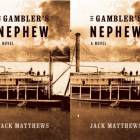It’s Just Like TV, But Without the Bodies
“But,” I said, “I once heard something that I trust. Leontius, the son of Aglaion, was going up from the Piraeus under the outside of the North Wall when he noticed corpses lying by the public executioner. He desired to look, but at the same time was disgusted and made himself turn away; and for a while he struggled and covered his face. But finally overpowered by the desire, he opened his eyes wide, ran towards the corpses and said: ‘Look, you damned wretches, take your fill of the fair sight.’”
—Plato, The Republic
In the spring of 2005, I was in Hikkaduwa, a beach town on the southern tip of Sri Lanka. I was working on building an IDP (Internally Displaced People) Camp for refugees fleeing the destruction caused by the December 24th, 2004 Tsunami. The crew of people building the temporary houses were a mix of Sri Lankans and westerners, financed by a former NFL offensive lineman, who also worked with us and who remains the largest man I’ve ever seen. We all were putting in absurd hours, all of us running on testosterone and machismo, daring each other to quit at the end of the day. Fourteen hour days were the norm and we’d been working over two weeks straight. International attention to the tsunami crisis was tapering off. Tourists were trickling back into Sri Lanka. Every once in while a bus filled with them would drive slowly by us. You couldn’t see a face as they drove by, but a little forest of hands balancing camcorders sprung out the tinted windows. Sometimes the NFL player and I would run at these buses swinging our hammers like Black Thor and his Tiny Caucasian Buddy.
One night as I was drifting off to sleep, it came over the wire that a big earthquake was recorded off of the coast of Indonesia and the conditions for a second tsunami were favorable.
The whole town evacuated up to the Buddhist temple on the hill.
We slept that night on the stone walkways of that temple—that is, we slept if our nerves let us.
Up at the temple, I met two Dutch women, both in their early twenties. At first I thought they were relief workers too, but it turned out they were just poorly dressed. Angling to get them to come and volunteer at the worksite, I asked them how they were enjoying their trip through the coast and how the images of mass destruction were affecting their beach holiday.
The two women expressed shock. The blond one said, “It’s just like TV, but without the bodies.” And in her tone, it was clear she was a little depressed that there hadn’t been a convenient body left out for her to see. Then she could go home and be an expert on devastation because she had seen a body.
I remembered this scene recently when all of the brouhaha blew up over Mike Daisey’s appearance on This American Life, wherein it was discovered that he hadn’t interviewed the people he said he’d interviewed and that he’d taken stories he’d heard from another province in China and manufactured meetings with people from those stories (If you haven’t heard it and the remarkable TAL retraction episode, you can find them here and here. This incident recalls the James Frey incident, and asks the question, “Would you rather be yelled at by Oprah or have Ira Glass quietly displeased with you?”)
What frustrates me about this, other than the general frustration that yet another person claiming non-fiction cred has abused its contract with readers, is that he missed a great opportunity. The fact that he wanted to see the exploitation, craved to witness it first-hand, needed to see it so badly that he went and invented swaths of it, seems like a really interesting desire to explore. As if Leontius from The Republic passing by the public executioner was so disappointed in not seeing corpses that he made up corpses so he could then scold himself for wanting to see.
If those two Dutch women were really interested in seeing the devastation, they didn’t need to see a body. They just needed to look around them. It was four in the morning, and in the faces of people who’d lived through the tsunami was the fear and terror that it was happening again. If the Dutch women had come to volunteer at the worksite that next day, they’d have seen the manic craziness of the place, the tired and wired edge to the constant jokes. Pointing to the ocean, someone would yell ‘Tsunami’ and we’d all mimic running away. We did this about a thousand times that day. Long after it had stopped being funny, we continued to do it.
If seeing a body is the only way your story—the way you’ve pre-constructed the story in your head; the story you set out from the beginning to tell and which you won’t allow yourself to be talked out of even by a lack of direct experience—will be complete, then you’ll feel justified in manufacturing corpses. It’s what the story needed . . . the demands of the story were such . . . the nature of narrative . . . In the end what we’re really talking about is a failure to see anything other than what you wanted to see. And good writing almost always involves a surrender of the ego’s belief that it’s in control of the writing.



